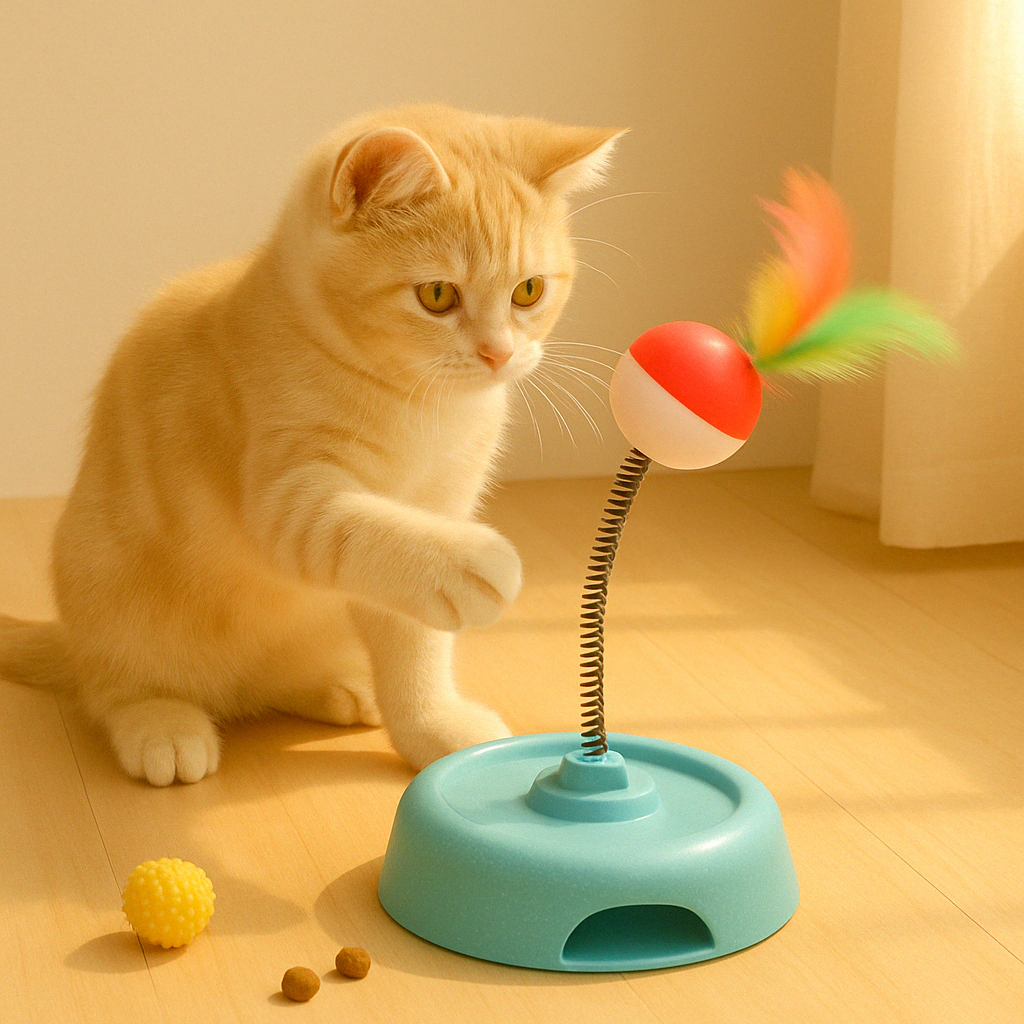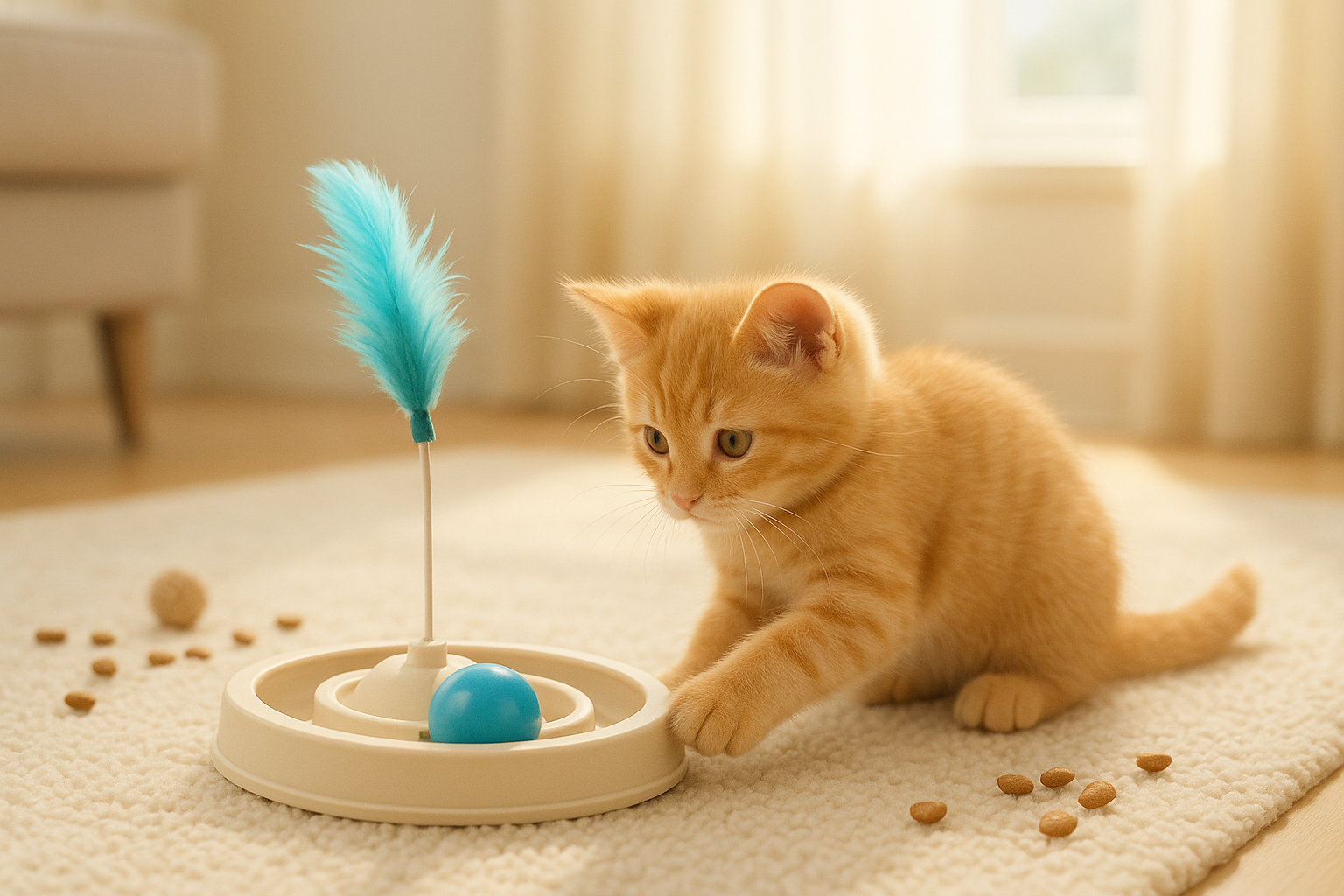Let’s face it—no matter how much we adore our feline companions, we can’t entertain them 24/7. Whether you’re working long hours, running errands, or just need a moment of peace, your cat still craves stimulation and interaction. That’s why investing in the right cat toy for solo play can be a total game-changer. These toys aren’t just about passing the time—they’re about keeping your cat mentally sharp, physically active, and emotionally content, even when you’re not around.
Cats are natural hunters. In the wild, they’d spend a good portion of their day stalking, chasing, and pouncing. Indoor cats, however, often miss out on those instincts unless we provide enriching alternatives. A cat toy for solo play helps bridge that gap by giving them something to chase, swat, wrestle, or roll around with—all on their own terms.
But not all solo toys are created equal. Some cats like toys they can bat across the floor, others prefer plush toys they can kick and cuddle. Some are mesmerized by blinking lights or unpredictable motion, while others respond best to textures, sounds, or scents like catnip or silvervine. The trick is finding a toy that matches your cat’s personality and energy level.
 Take, for example, motion-activated toys. These clever inventions only spring to life when your cat gets close—perfect for keeping your pet intrigued throughout the day. They mimic prey-like movements, darting in unexpected directions or spinning rapidly, which encourages your cat to interact over and over again. When paired with rotating feathers, jingling bells, or flashing lights, they offer hours of engagement with no need for your input.
Take, for example, motion-activated toys. These clever inventions only spring to life when your cat gets close—perfect for keeping your pet intrigued throughout the day. They mimic prey-like movements, darting in unexpected directions or spinning rapidly, which encourages your cat to interact over and over again. When paired with rotating feathers, jingling bells, or flashing lights, they offer hours of engagement with no need for your input.
For cats that love to cuddle or wrestle, plush kicker toys are another excellent option. These often contain crinkly paper, catnip, or soft stuffing and are shaped like small animals or fish. Cats love to grab them with their front paws and bunny-kick them with their hind legs—satisfying both play and hunting instincts. Bonus points if the toy includes varied textures or scents to keep things interesting.
If you’re dealing with a clever or easily bored cat, puzzle-based solo toys can work wonders. These toys often include hidden treats or moving parts that challenge your cat to problem-solve. Not only do they stimulate your cat’s brain, but they also slow down snack time—great for cats prone to overeating or eating too fast. These types of toys are especially valuable for high-energy or intelligent breeds like Bengals, Abyssinians, or Siamese.
Another underrated style of cat toy for solo play is the good old-fashioned ball track toy. These usually consist of a circular or figure-eight plastic track with a ball inside that your cat can bat around endlessly. Some versions now include multiple levels, flashing lights, or interchangeable balls for variety. They’re simple, durable, and surprisingly effective at holding a cat’s attention.
Let’s not forget self-play tunnels and pop-up cubes, which are also technically toys. These structures invite your cat to hide, pounce, and explore even when no one is watching. Toss a toy inside or sprinkle a little catnip and you’ve instantly created an indoor adventure zone. The beauty of these is that they can be folded away when not in use, making them perfect for smaller homes or apartments.
Now, you might wonder—do these toys really make a difference? The answer is a resounding yes. Cats that have regular access to engaging solo play are often more relaxed, less prone to destructive behavior, and even healthier overall. Play helps reduce boredom, which can lead to anxiety, over-grooming, or aggression. It also helps cats maintain a healthy weight and encourages natural behavior patterns, even in a domestic setting.
So the next time you’re heading out the door, don’t feel guilty. Just make sure your cat has the perfect toy waiting—and let the solo adventures begin.









